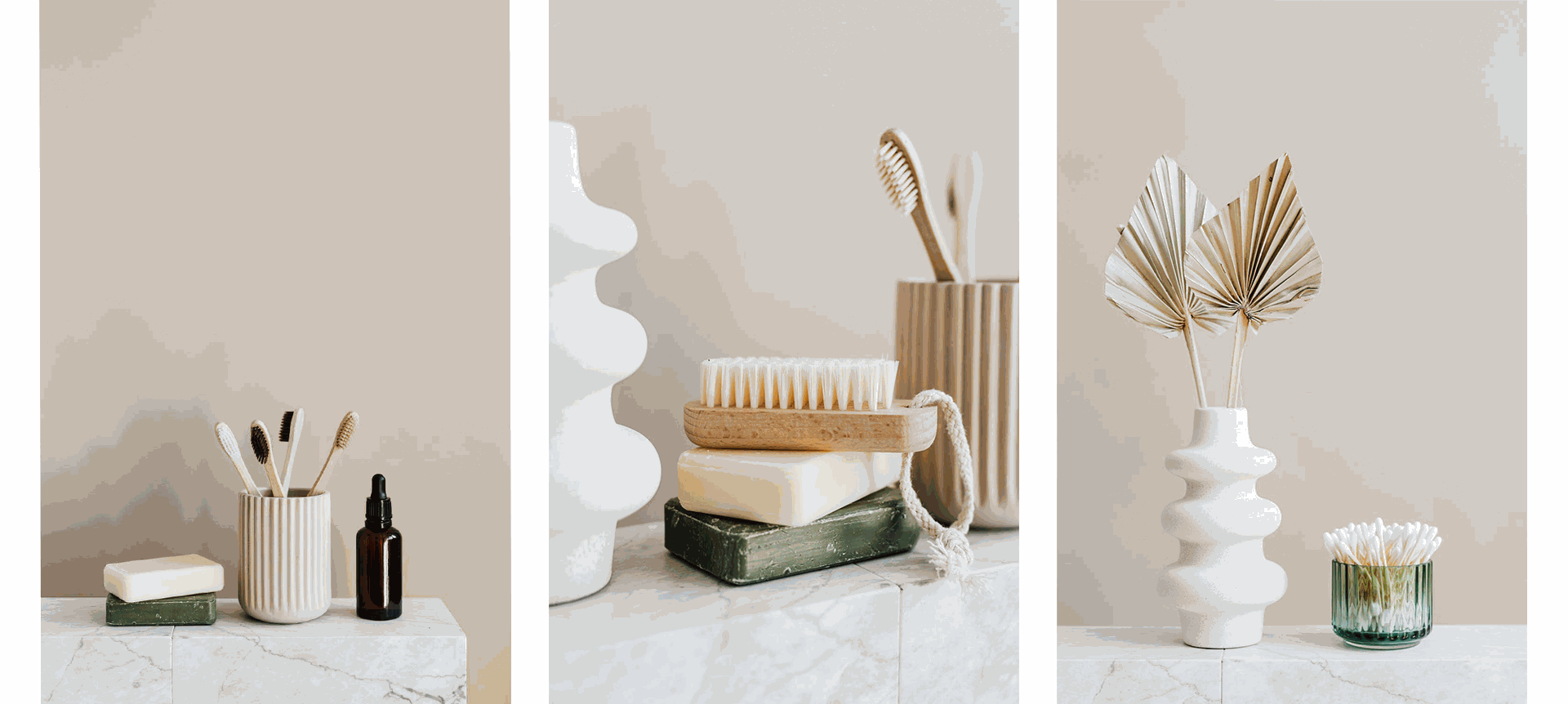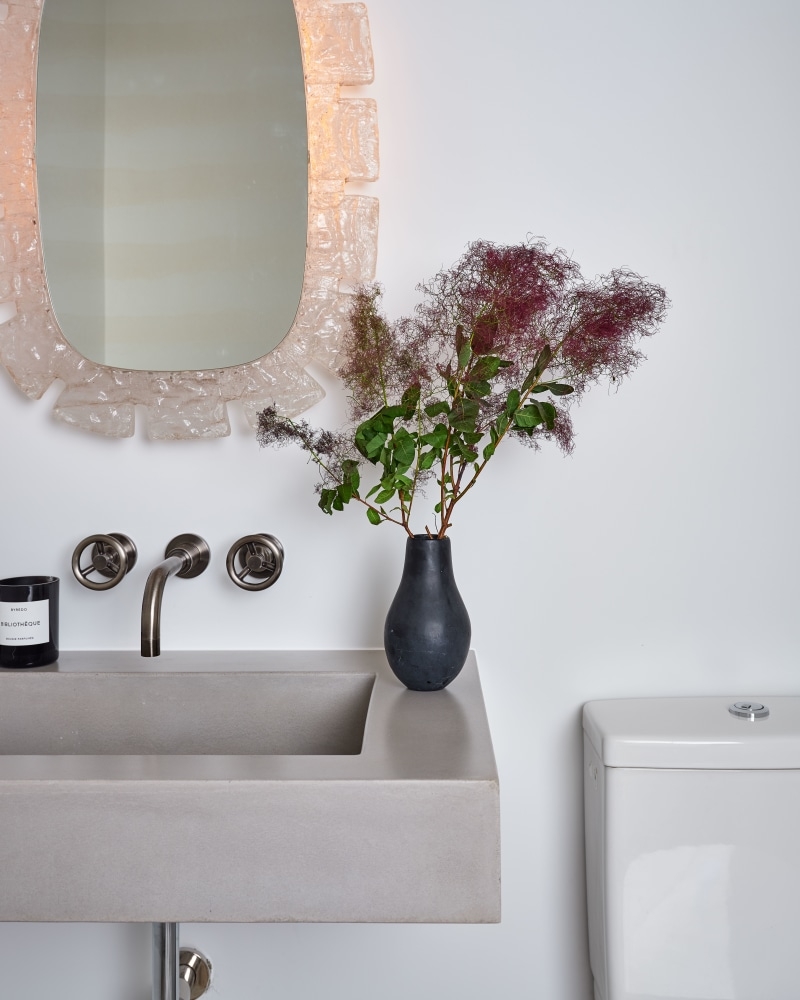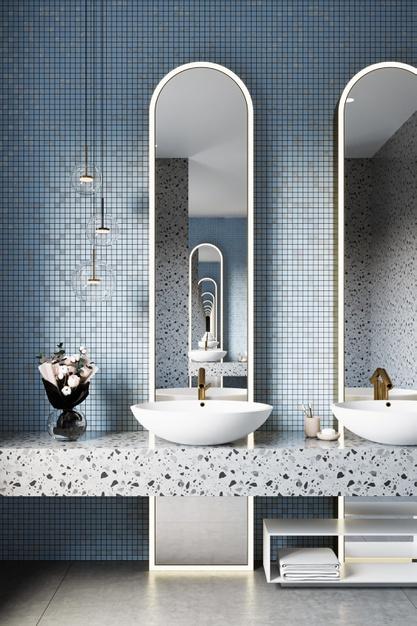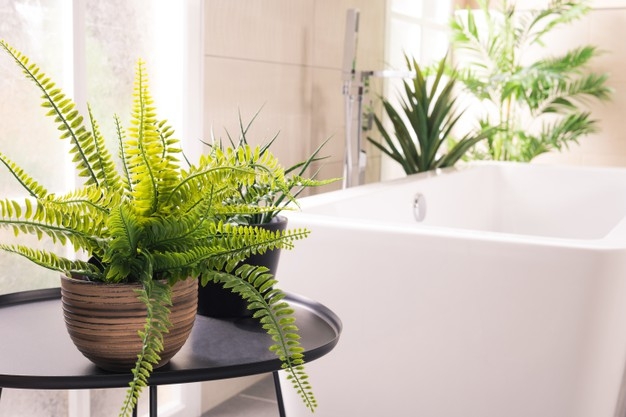
Sustainable bathroom design: a guide to eco-friendly remodeling
Environmentally friendly bathrooms are more important to us than ever, here in the circular economy. Tackling the climate emergency from the bathroom isn’t just about our day-to-day, energy-saving and water-saving behaviours, such as taking shorter showers and fewer baths. It’s also about ensuring that our remodelling efforts are driven toward sustainable building. Whether you’re fitting your own bathroom or paying to have your bathroom fitted, you have the chance to really make a difference to the planet with your property development choices.

The way we shop has become as eco-conscious as it is aesthetically driven.
How does climate change affect the way we live?
As interior design is influenced more and more by socially conscious millennials and Generation Z, the way we shop for bathtubs, vanity units and our beautiful, walk-in showers has become as eco-conscious as it is aesthetically driven. Sure, we bulk-buy our soaps and make sure they’re biodegradable, but now we’re also focused on making sure the spaces in which we use them have minimal negative environmental impact, too.
The green architecture movement has given us everything from the option to build our bathrooms in tiny houses to robotics that help to minimise our water usage. But, for those of us who live in draughty, old houses and flats that weren’t built to be climate positive, what carbon offsets can we make when putting in a new bathroom?

Credit: photography by Claire Esparros, design by Tali Roth
Sustainable plumbing fixtures
Choosing environmentally friendly materials for your fixtures and fittings is, of course, the most impactful way to positively affect your environmental impact in the bathroom. Materials such as natural marble can last for multiple lifetimes, while solid surface materials like Corian® are low in volatile organic compounds and meet multiple regulatory environmental standards. You should also invest in a low-flow toilet, which can use up to six litres less water per flush than a regular toilet, and put an aerator in your washbasin taps to conserve water usage.
Smart plumbing solutions
Home automation is an increasingly popular way of lowering a bathroom’s environmental impact. And it’s a whole lot more hygienic than showering less often and having a composting toilet. Whether it’s an app-based system that detects leaks and shuts off the water, a self-cleaning toilet that uses less water than a traditional toilet or a solar-powered water heater that draws energy from the sun, there’s an ever-growing number of smart plumbing options available to increase the sustainability of your bathroom.
Eco-friendly bathroom cabinets
Responsibly sourced wood for your bathroom cabinets will result in lower greenhouse gas emissions than man-made materials and wood stores carbon, too, helping to mitigate climate change. Strawboard cabinets are now also increasing in popularity as an eco-friendly alternative to medium density fibre (MDF) board and there are some beautiful ones on the market if you’re looking to make your eco-bathroom a luxury bathroom.

Are ceramic tiles sustainable?
In terms of eco-friendly bathroom tiles, clay ceramic is big on sustainability because it is a natural material, drawn from the earth and, therefore, completely compostable when broken down. Stone is also a great material for environmentally friendly tiles because it, too, is a natural resource with no factory processes involved in its manufacture.
You can, of course, also recycle bathroom tiles, meaning you can carefully remove and sell on your old ones or even buy vintage tiles, which will look especially lovely in a shabby chic bathroom that mixes and matches old and new.
Environmentally friendly tile adhesive
As for sustainable tile adhesive, check out the Kerakoll range of adhesives for laying ceramic tiles and natural stone. Kerakoll is a mineral adhesive for ceramic, porcelain and stone tiles, but which gives all the performance of its less environmentally friendly competitors.
Upcycling bathroom furniture
The beauty of the shabby chic, mid-century modern and retrofuturist styles from an ecological perspective is that you can mix and match brand new pieces with repurposed antique bathroom furniture to achieve a timeless elegance while reducing waste. The best way to go about this is to choose the brand-new fixtures and fittings first, so you have the skeletal structure of your environmentally friendly bathroom, and then add second-hand pieces to it as you find them, so you know they’re not going to look out of place.

Develop an eco-friendly aesthetic
Finally, if you’re really looking to go big on delivering an eco-friendly bathroom, think about your design choices, too. Muted colours in eco-friendly paints, like those created by British paint manufacturer Earthborn, which reflect the colours found in nature, will help you to more comfortably incorporate sustainable fixtures and fittings. Putting plants in your bathroom will also help to draw out your inclination toward sustainable choices, not to mention releasing oxygen into the atmosphere and absorbing carbon dioxide. It’ll only be a matter of time before you’re throwing your bamboo toothbrush into your bamboo toothbrush holder and patting yourself on the back for a sustainable bathroom, beautifully finished.
Looking for something else to read? Check out our interview with Californian designers of sustainable interior products, Kalon Studios.